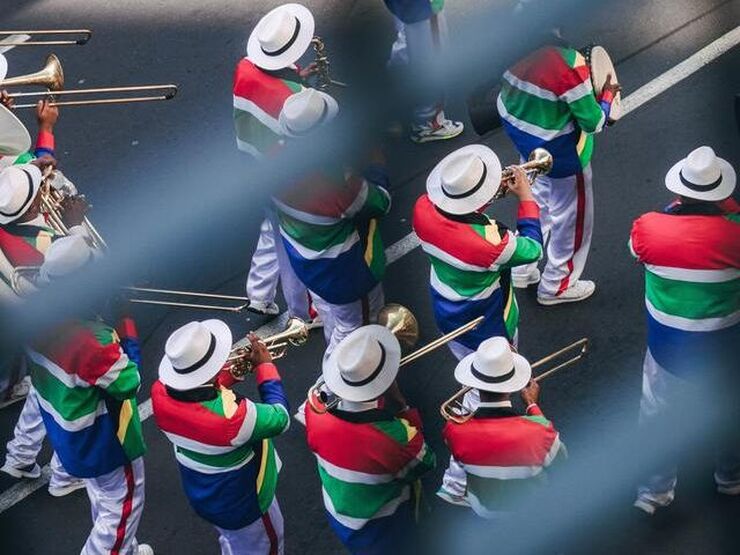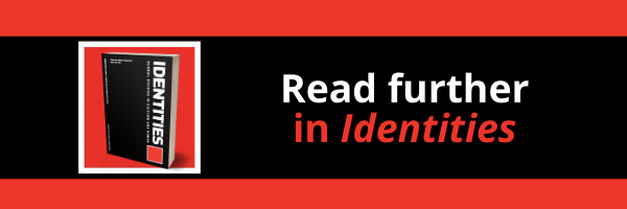|
|
|
Today, national symbols serve as modern totems to distinguish and portray nation-states. Most of us watched the Tokyo Olympic Games and saw the pride and intense emotions that athletes and fans displayed in paying homage to their national flags and anthems at medal ceremonies. National symbols are usually chosen to reflect a single united nation, but they are often contested in divided societies, as they play a powerful role in preserving the collective memories and reflecting the cultural narratives of groups.
It is therefore difficult to establish symbols which reverberate with the cultural legacies of diverse groups in divided societies, and in particular, post-conflict societies. Although some groups might identify less with official national symbols in diverse societies, nationalism scholars believe that attitudes can change over time. Due to the pervasive display of official symbols, people can become accustomed to them, and memories of former symbols associated with particular cultures can fade.
South Africa is an example par excellence of a heterogeneous and post-conflict society, and is widely regarded as deeply diverse and complex. While there are four dominant racial groups – Whites, Blacks, Indians and Coloureds – there also exists a number of ethnic, linguistic and cultural divides within the major racial categories. During apartheid, the country became a pariah state due to the entrenchment of racial segregation and systemic human rights abuses which led to intense interracial conflict.
In 1994, the country underwent dramatic social and political transformation, culminating in the so-called ‘new’ South Africa. However, the dawn of democracy did not magically create a united South African nation. A new set of national symbols – including a flag, anthem, coat of arms, constitution and range of national holidays − were introduced with the hope that they would contribute towards healing societal divisions, creating a united nation and fostering national pride. Early indications were that the new symbols were received positively. The new flag was, for example, ‘banalised’ by being painted on spectators’ faces at sporting events and printed on curios and clothes. However, early research indicated that not all groups identified equally strong and positively with the new symbols. For example, Blacks identified significantly more with the new symbols than other groups. Afrikaans-speaking Whites, on the other hand, shunned the new symbols. The new constitution was the only symbol which enjoyed relatively widespread acceptance. In my Identities article, ‘National pride and identification with national symbols in a divided society: the case of South Africa’, I explore identification with South African national symbols and national pride more than 20 years after the political transition. The findings indicate that attitudes towards the current symbols have indeed changed. Afrikaans-speaking Whites – who initially disidentified with the flag and anthem – were more positive. Noteworthy differences between groups were observed. Group membership was, in fact, the most important predictor of national pride, and was more important than any of the symbols. Overall, the two White groups not only displayed less pride in being South African, but also identified less with the symbols investigated. It is of interest that the national anthem was the most important symbol predicting national pride. As the national anthem represents different cultural legacies (it contains elements of the former anthem Die Stem [The Voice] and the freedom song Nkosi Sikelel’ iAfrika [God Bless Africa], and is written in five South African languages), it provides links to the cultural narratives of different groups. It can be concluded that identification with subnational groups remains important to many South Africans. People identify on a deeper level with symbols which reflect their own cultural and historical legacies, and such symbols play a more profound role in binding them to the nation. In diverse societies such as South Africa, symbols that reflect different cultural legacies have a better chance of being accepted and valued. The study illustrates that research into national symbols is important in providing a lens to understand identity patterns within diverse societies. As Geisler (2005) states: National symbols – flags, national anthems, monuments, currencies, capital structures, cultural icons, and public holidays, to name a few – are tricky cultural signposts, for they preserve not only the "victorious" definitions promoted by the nation but also the fossilized debates and controversies that have crystallized around these symbols over decades or, in some cases, centuries. Through close readings of national symbols, we can discover challenges to a perceived consensus – challenges that may have been silenced permanently, or for a time, but which may surface again when political or cultural circumstances are more favorable to their cause
Blog post by Elirea Bornman, University of South Africa, South Africa
Read the Identities article: Bornman, Elirea. National pride and identification with national symbols in a divided society: the case of South Africa. Identities: Global Studies in Culture and Power. DOI: 10.1080/1070289X.2021.1994227
Explore other relevant Identities articles:
‘Able to identify with anything’: racial identity choices among ‘coloureds’ as shaped by the South African racial state OPEN ACCESS Why does patriotism prevail? Contextual explanations of patriotism across countries Race otherwise: forging a new humanism for South Africa
0 Comments
Your comment will be posted after it is approved.
Leave a Reply. |
|
Explore Identities at tandfonline.com/GIDE |
|
The views and opinions expressed on The Identities Blog are solely those of the original blog post authors, and not of the journal, Taylor & Francis Group or the University of Glasgow.


